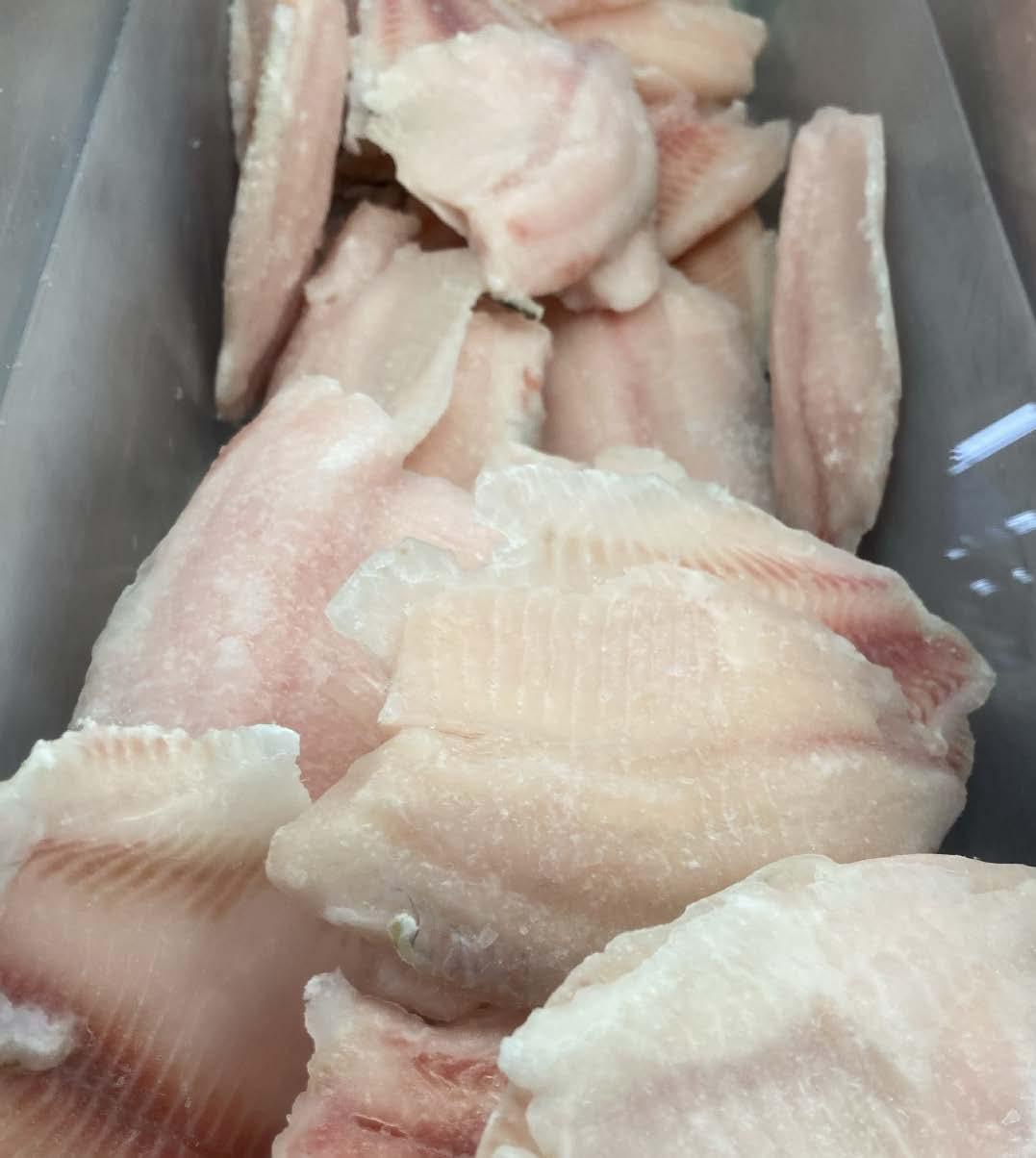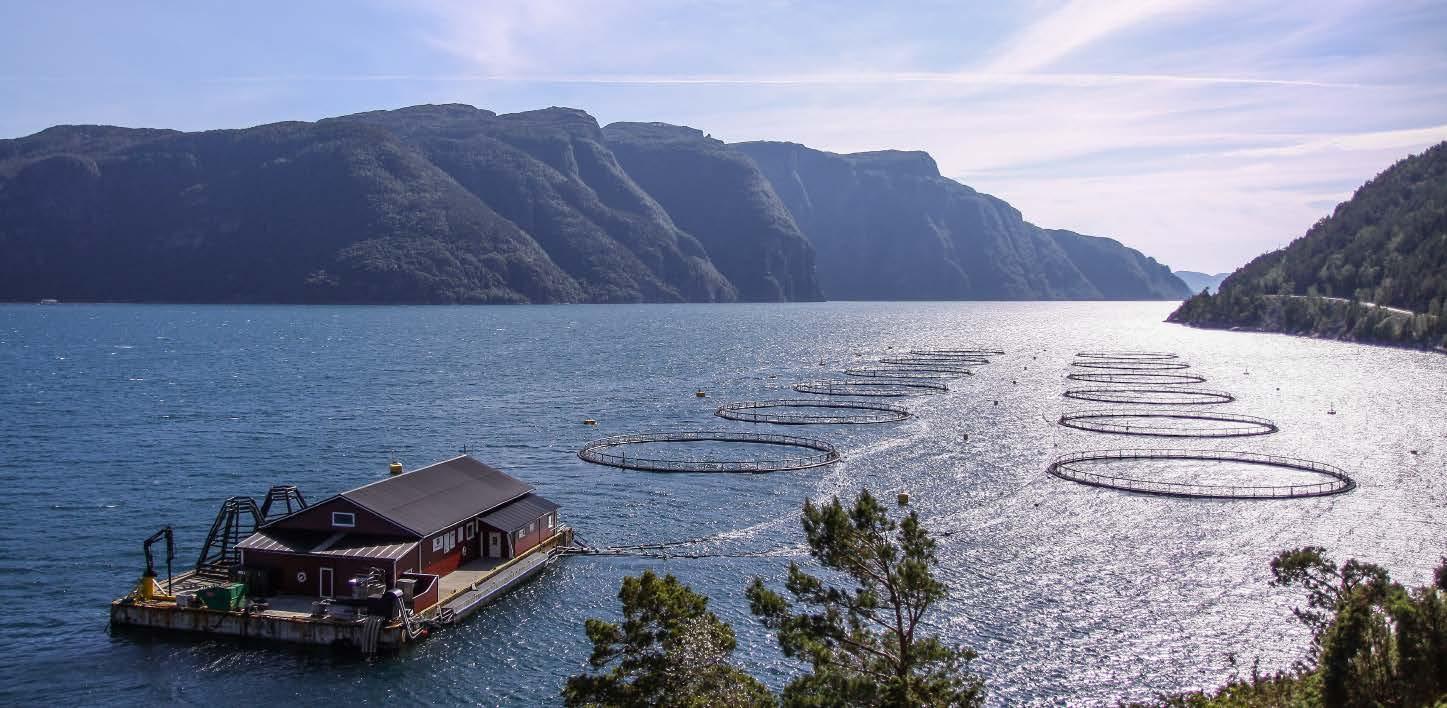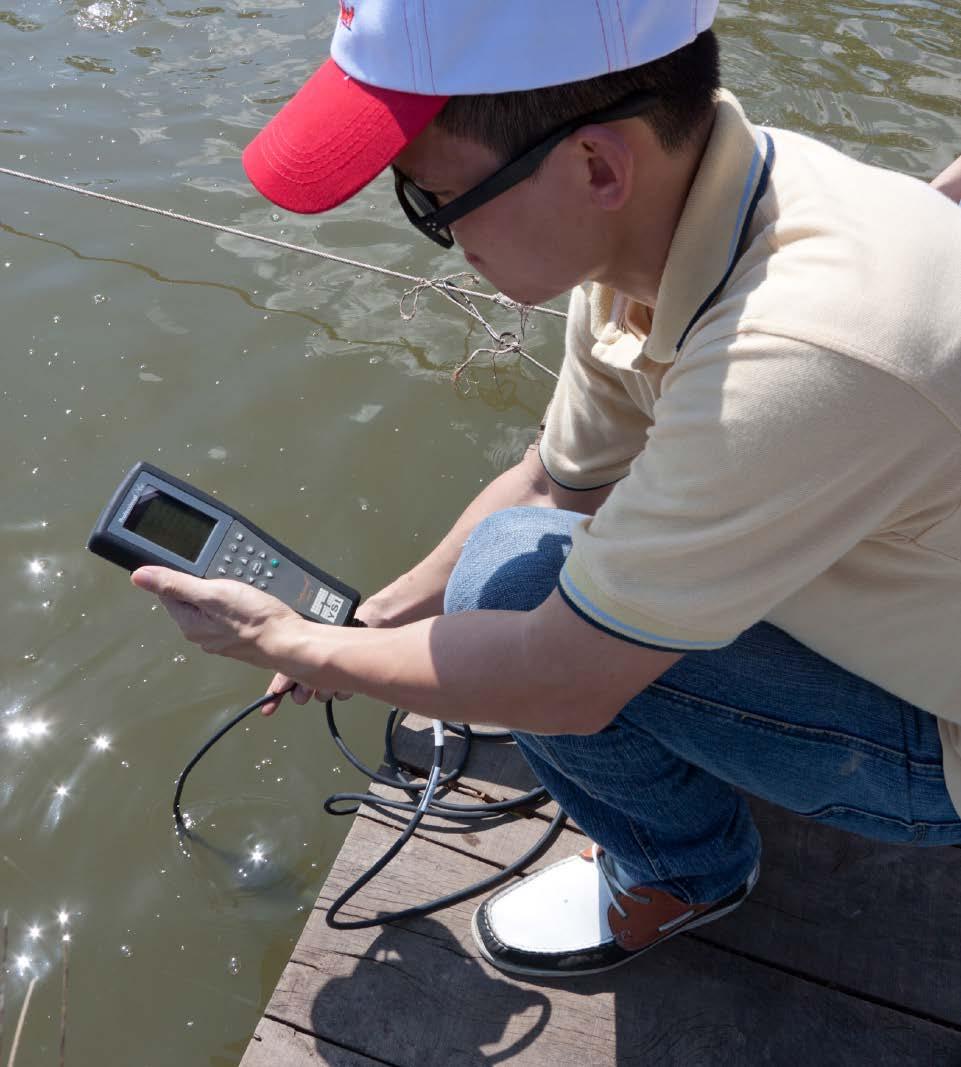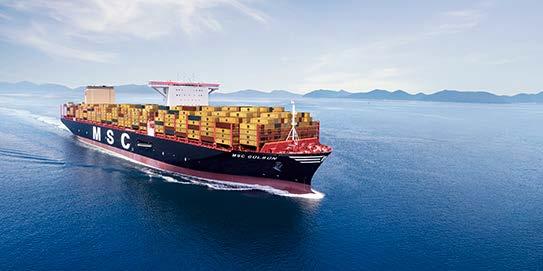
9 minute read
XpertSea: a technology and finance company that is revolutionizing aquaculture
An interview with the CEO
In an exclusive in-depth Q&A interview with Aquaculture Magazine, Valerie Robitaille who is the CEO of the Canadian company XpertSea, shares her business vision and experience within the aquaculture industry and the international shrimp market in relation with technology, computer science, data trading, and the role of women in the aquaculture industry and markets.
What is your studies background, and how has it led you to work in the aquaculture industry?
I’ve been fascinated by the oceans from a young age.
I pursued my interest in the oceans by obtaining a bachelor’s degree in Marine Biology from Maine Maritime Academy in 2007, and then I completed a master’s degree in Geoengineering from the National Institute of Scientific Research in Quebec City.
During my studies, I learned about optics and photonics and, together with my partner Cody, designed an application for commercial marine environments, which we also patented.
Then we were contacted by a shrimp hatchery that only had very basic tools for counting larvae, and that helped us understand how our technology could bring significant benefits to the shrimp industry.
That’s when we launched XpertSea, to research and develop new methods for tracking and managing aquatic populations, and more broadly to find ways to make aquaculture more efficient, profitable and sustainable.

Valérie Robitaille XpertSea CEO landscape.
Tell us a brief history of the company: and your role as its CEO
• In 2011 Cody Andrews and I began developing commercial applications using optics and photonics in marine environments.
• In 2012, following interest from aquaculture producers, we and our co-founders launched XpertSea to develop new methods for tracking and managing aquatic populations.
• In 2015 we closed a financing seed round of 1.25M CAD from investors led by Real Ventures, edō Capital and BDC.
• In 2016, we commercially launched the XperCount2, a connected device using computer vision to characterize aquatic organisms and automate functions such as counting, sizing and weighing.
• By 2017, we had local representatives and partners in Asia, South America and Europe, and our technology was being used in more than 40 countries.

• In 2020, we incorporated all of our hardware and software technologies into a Smartphone App that lets shrimp farmers capture accurate animal data, and track growth from stocking through harvest, using just their Android or iPhone’s built-in camera.
Why did you switch from making a shrimp-counting technology to launching a marketplace for trading shrimp?
Initially it was clear that one of shrimp producers’ biggest challenges was the lack of visibility they have to properly manage their production.
There was no technology and no data, so it was hard for growers to know how many shrimp they had in their pond, never mind tracking growth or identifying disease patterns. So at first we developed technology that uses computer vision and machine learning to help the farmers optimize their production.
By working closely with the farmers and really trying to understand their pain points, we realized that their challenge is not just in growing shrimp, but also in selling the shrimp to buyers.

XpertSea in Asia - Valerie Robitaille and Asia GM Chelsea Andrews.
Our big breakthrough came when we realized that our technology produces a lot of valuable data about their ponds and about the industry that can be leveraged to unlock a variety of business solutions for both growers and buyers.
When they can share precise data transparently, each party can transact with confidence.
In 2020 we then leveraged our technology and our data to launch a new “data-driven marketplace” where farmers can connect to buyers efficiently and get same day financing. With these kinds of challenges out of the way, they can focus on growing shrimp and growing their business.
Tell us about your role as XpertSea’s CEO
I have learned from experience that the CEO of a technology startup plays many roles and must never be afraid to get her hands dirty.
This suits me well as I am interested in both the entrepreneurial side of things and the scientific-technological side of things.
But I am only one person, and everything I do is made possible by our 60-person team of hard-working innovators, not only in Canada but also in Latin America and Southeast Asia.
XpertSea works with machine learning, computer science, and AI. How did you get involved in these areas, and why do you think they are essential for the aquaculture industry?
Our journey into computer science began with the ideation and design of the first XperCount prototype in 2012.
We did not actually intend to use AI or machine learning to begin with; we wanted the most flexible and precise solutions, and we quickly realized that machine learning and deep learning were the most effective tools for the job.
So we brought on board a team of highly skilled people in computer vision and AI, led by our CTO Samuel Couture Brochu, to unlock these capabilities.
Since then our AI skills -- from developing computer vision models to detect small aquatic organisms, to predicting the yield of an Ecuadorian shrimp pond -- have evolved, and machine learning is now the cornerstone of our innovation.
Like other industries, as aquaculture evolves we want to understand clearly what the work entails, and then find ways to optimize it. On a farm, there are thousands of data points per day impacting the health of the ponds -- feed, seed, weather, water, soil; etc. -- yet very little data is recorded.
How do you imagine shrimp farming would be in the future? What would be different from now? What would prevail from current practices?
We define ourselves as a technology and finance company because we see them being the two biggest problem areas to solve in the industry.
We are still early in the technology and data revolution in shrimp farming; only a small portion of farmers are using data to better farm and optimize their growth.
We see a path where technology adoption will drive better behavior but most importantly predictive analysis.
As technology becomes more affordable, it will play a much bigger role in the production process than it does today.
Real time monitoring will enable predictive analytics and make the sector more proactive instead of reactive.
We like to look at the agriculture sector to give us a glimpse of where aquaculture will go.
More and more research is being put towards improving genetics, nutrition, and the systems that shrimp are grown in than ever before.
On the finance side, farmers and even processing plants have challenges accessing traditional banking systems, so that’s another area that will be very different in the future.
We look at how fintech companies are revolutionizing the financing world and we believe this revolution is coming to aquaculture too.
What message would you like to give to young women thinking about pursuing a career in the aquaculture industry?
Whether you are a young woman inspired by business and finance, or by science and technology, or by working on the ground with growers and processors in different geographies, there is a place for you.
Aquaculture also presents opportunities to help our planet socially, economically and environmentally.
Aquaculture’s importance will accelerate as the world’s population continues to grow. And there will be many opportunities for young women to help develop one of the leading sources of nutrient-rich protein for our hungry planet; or to help the industry evolve with sustainable practices; or to help women working in aquaculture around the world develop their skills and take a more prominent role in the industry.

XpertSea in Asia - Valerie Robitaille with execs and field reps.
Similarly our experience working with people like Amy Novogratz at Aqua-Spark, one of our investors, shows there is a place for a woman’s unique perspective, and it can make all the difference.
I really haven’t faced any particular challenges as a woman in the industry, but I know that my experience is not universal.
We have staff on the ground in various countries around the world, and we have to pay attention to their experiences and their concerns, because the social, political or security situation in each country is different.
For further information on the company and its technology and products, please visit: https://xpertsea.com/









